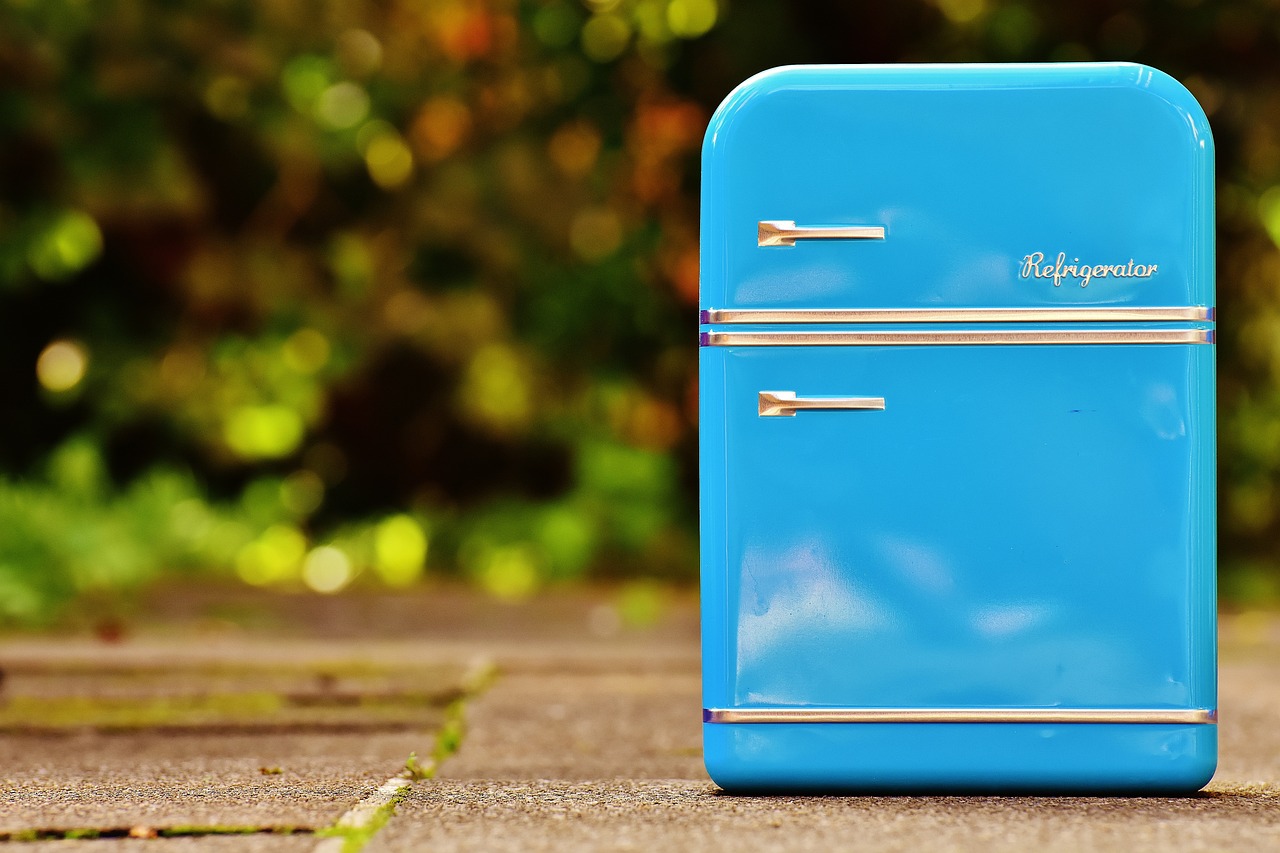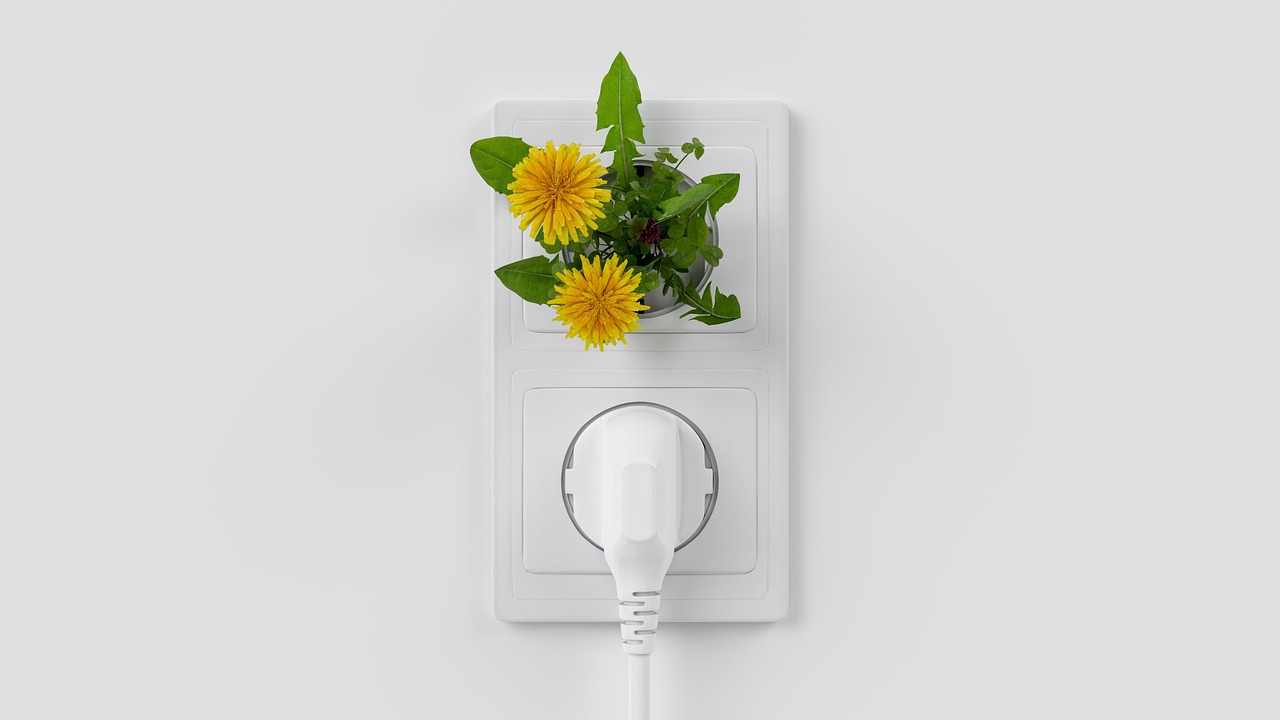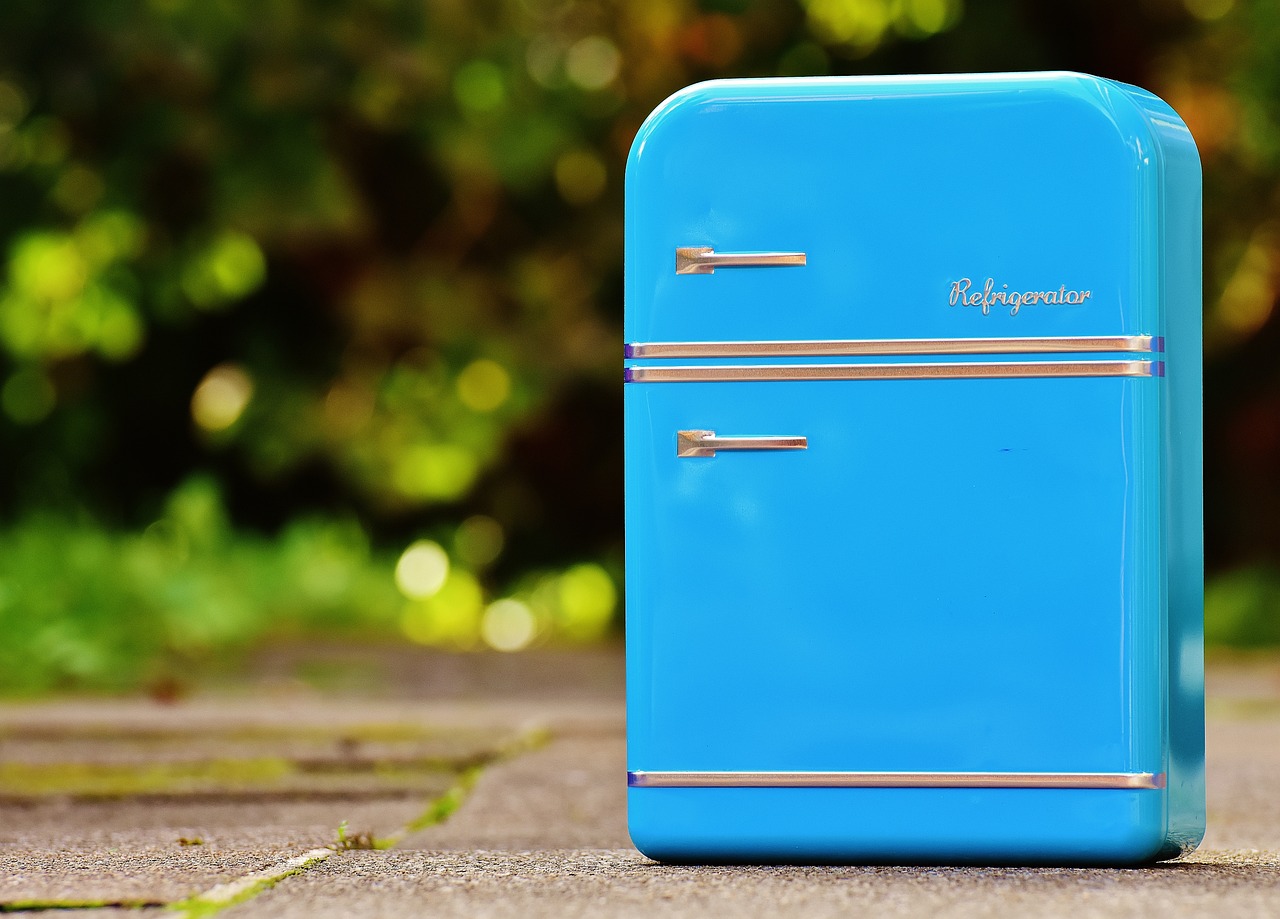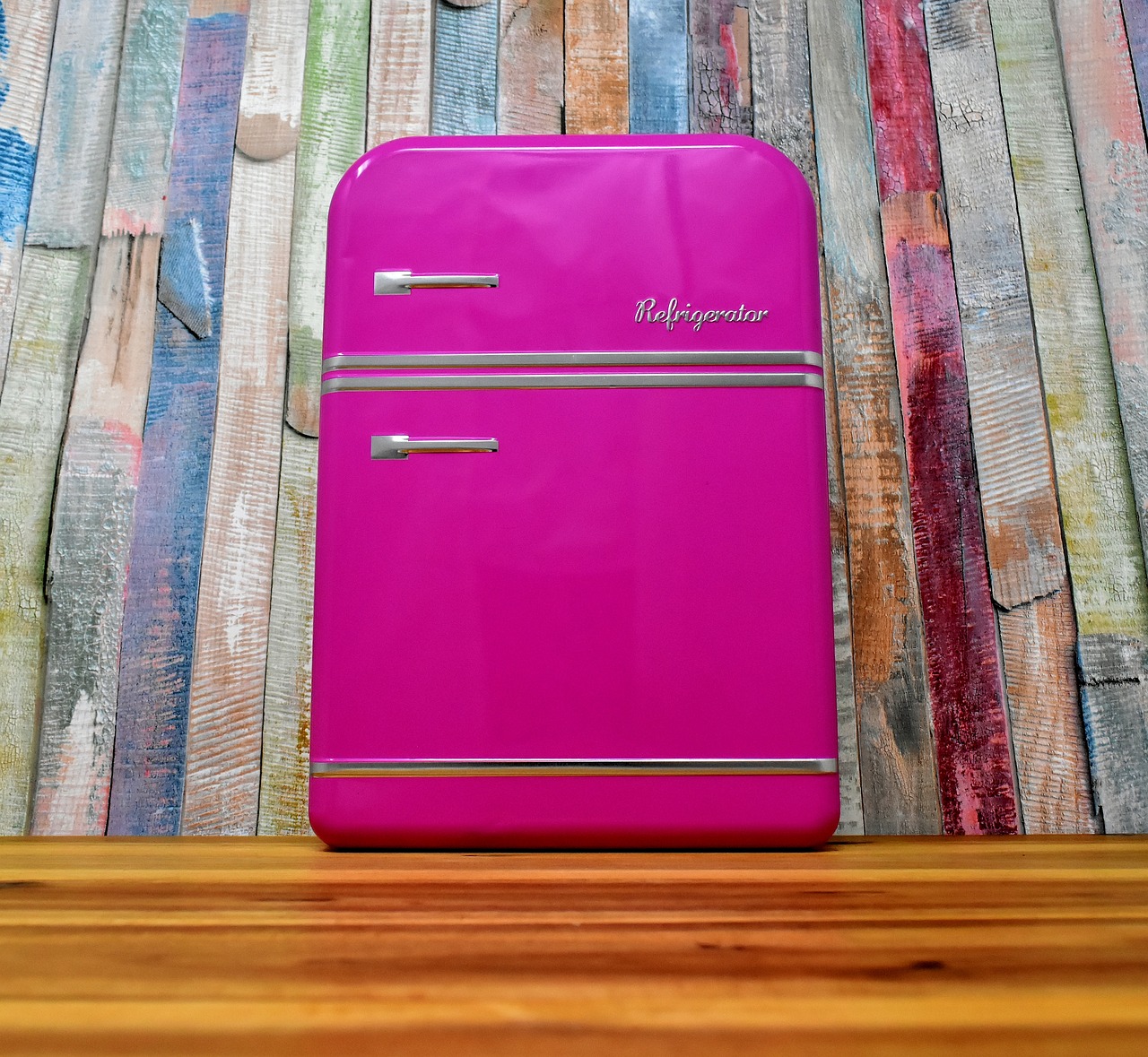Sustainable Refrigeration Technologies for a Cooler Planet
As we navigate through the pressing challenges of climate change and environmental degradation, the need for sustainable practices in every industry is more crucial than ever. One area that has seen remarkable innovation is refrigeration. Sustainable refrigeration technologies not only help in reducing energy consumption but also play a significant role in minimizing greenhouse gas emissions. With the global demand for cooling solutions on the rise, it is essential to explore how these technologies can pave the way for a greener future.
Imagine a world where our refrigerators and air conditioning units operate without harming the planet. This is not just a dream; it is a reality that is becoming increasingly attainable through the development and adoption of eco-friendly refrigeration technologies. By harnessing the power of natural refrigerants, magnetic refrigeration, and solar energy, we can create systems that are not only efficient but also sustainable. These advancements are not merely technical fixes; they represent a fundamental shift in how we think about cooling and its impact on our environment.
In this article, we will delve into various sustainable refrigeration technologies, highlighting their benefits and applications. From the use of natural refrigerants like ammonia and carbon dioxide to innovative systems powered by solar energy, we will uncover how these solutions can provide effective cooling while protecting our planet. Additionally, we will discuss the challenges and barriers that these technologies face and the future trends that could shape the refrigeration industry.
Stay with us as we explore the fascinating world of sustainable refrigeration technologies, where innovation meets environmental responsibility. Together, we can work toward a cooler planet, one sustainable solution at a time.
- What are natural refrigerants? Natural refrigerants are substances that occur in nature and can be used in refrigeration systems without the harmful environmental impacts associated with synthetic refrigerants.
- How does magnetic refrigeration work? Magnetic refrigeration utilizes the magnetocaloric effect, where certain materials heat up when magnetized and cool down when removed from the magnetic field, providing an energy-efficient cooling method.
- What are the benefits of solar-powered refrigeration? Solar-powered refrigeration systems harness renewable energy, reducing reliance on fossil fuels, lowering energy costs, and providing cooling solutions in off-grid areas.
- What challenges do sustainable refrigeration technologies face? Some challenges include high initial costs, regulatory hurdles, and the need for greater public awareness and acceptance of these technologies.

[Introduction to Sustainable Refrigeration]
Understanding sustainable refrigeration is not just a trend; it’s a necessity in today’s world. As we face the growing challenges of climate change and environmental degradation, the refrigeration industry has a critical role to play in reducing energy consumption and greenhouse gas emissions. Imagine a world where our cooling systems not only keep our food fresh and our homes comfortable but also help in preserving the planet. This is the essence of sustainable refrigeration.
In essence, sustainable refrigeration refers to technologies and practices that minimize the negative environmental impacts of cooling systems. Traditional refrigeration methods often rely on harmful refrigerants that contribute significantly to global warming. Therefore, adopting eco-friendly practices is not just beneficial; it's imperative for the future of our planet.
One of the key reasons to shift towards sustainable refrigeration is the alarming rate at which energy is consumed in this sector. According to recent studies, refrigeration and air conditioning account for nearly 20% of global energy consumption. This staggering figure highlights the urgent need for innovative solutions that can drastically reduce energy usage. By implementing sustainable technologies, we can not only cut down on energy bills but also mitigate the overall carbon footprint of our cooling systems.
Moreover, the adoption of sustainable refrigeration practices can lead to significant economic benefits. Businesses that invest in energy-efficient cooling solutions often experience reduced operational costs and improved brand reputation. Consumers are becoming increasingly aware of the environmental impact of their choices, making sustainability a key factor in purchasing decisions.
In addition to economic advantages, sustainable refrigeration technologies can enhance food safety and preservation. With the right systems in place, perishable goods can be kept fresh for longer periods, reducing waste and ensuring that communities have access to healthy food options. This is especially crucial in developing regions where access to reliable refrigeration is limited.
As we delve deeper into the various types of sustainable refrigeration technologies, it becomes clear that the future of cooling solutions is not just about efficiency; it’s about creating a balance between our needs and the health of our planet. By embracing these innovative technologies, we are paving the way for a greener future, ensuring that we leave behind a cooler planet for generations to come.
In summary, sustainable refrigeration is essential for reducing energy consumption and greenhouse gas emissions. By adopting eco-friendly practices, we can significantly impact our environment positively. In the following sections, we will explore various sustainable refrigeration technologies that are leading the charge toward a more sustainable future.

[Types of Sustainable Refrigeration Technologies]
In an era where climate change is at the forefront of global discussions, the refrigeration industry is undergoing a significant transformation. Traditional refrigeration systems, often reliant on harmful refrigerants and high energy consumption, are being replaced by sustainable refrigeration technologies that not only reduce our carbon footprint but also enhance energy efficiency. Let’s dive into the various innovative technologies that are paving the way for a greener future in cooling solutions.
One of the most promising advancements in this field is the use of natural refrigerants. Unlike conventional refrigerants that contribute to ozone depletion and global warming, natural refrigerants such as ammonia, carbon dioxide (CO2), and hydrocarbons are becoming increasingly popular. These substances have a significantly lower environmental impact and are often more energy-efficient. For instance, ammonia is known for its excellent thermodynamic properties, making it a highly efficient refrigerant for large-scale industrial applications. However, it also comes with safety considerations that need to be addressed.
Another exciting technology is magnetic refrigeration. This emerging method utilizes the magnetocaloric effect, where certain materials heat up when magnetized and cool down when the magnetic field is removed. This process can achieve remarkable energy savings compared to traditional vapor-compression systems. Currently, research is focused on improving the materials used and scaling the technology for commercial applications. Imagine a refrigerator that cools your food without the need for harmful gases or excessive electricity—this is the potential of magnetic refrigeration!
Solar-powered refrigeration systems also deserve a spotlight in our exploration of sustainable technologies. By harnessing the power of the sun, these systems can provide cooling solutions in an eco-friendly manner. The integration of solar panels with refrigeration units enables energy independence, especially in remote areas where electricity is scarce. This not only helps in reducing reliance on fossil fuels but also plays a crucial role in food preservation and healthcare in underserved regions.
As we advance further into this century, the integration of smart technologies with sustainable refrigeration systems is becoming more prevalent. The Internet of Things (IoT) allows for real-time monitoring and management of refrigeration units, enhancing their efficiency and performance. Imagine being able to control your refrigerator's temperature remotely, ensuring optimal conditions for your food while minimizing energy consumption. This is the future we are heading towards, where technology and sustainability go hand in hand.
In summary, the landscape of sustainable refrigeration technologies is rich with potential. From natural refrigerants to magnetic systems and solar-powered units, each technology offers unique benefits that contribute to a cooler planet. However, it’s crucial to continue exploring these options and investing in research to overcome existing challenges. The future of refrigeration is not only about keeping things cold; it’s about doing so in a way that is kind to our planet.

[Natural Refrigerants]
In the quest for a more sustainable future, natural refrigerants have emerged as a shining beacon of hope. These eco-friendly alternatives to traditional refrigerants, such as hydrofluorocarbons (HFCs), are gaining traction in the refrigeration industry due to their low environmental impact. Natural refrigerants include substances like ammonia, carbon dioxide (CO2), and hydrocarbons, each offering unique benefits that contribute to energy efficiency and reduced greenhouse gas emissions.
One of the most significant advantages of natural refrigerants is their minimal global warming potential (GWP). For instance, ammonia has a GWP of 0, making it an excellent choice for industrial applications. Similarly, CO2 has a GWP of just 1, which is significantly lower than many synthetic refrigerants. This characteristic is crucial in the fight against climate change, as it helps to mitigate the harmful effects of traditional refrigeration systems.
However, while the benefits are clear, the adoption of natural refrigerants is not without its challenges. One notable challenge is the safety concerns associated with certain natural refrigerants. Ammonia, for example, is toxic and requires stringent safety measures to prevent leaks and ensure safe handling. On the other hand, hydrocarbons, while flammable, can be safely used in well-designed systems. Thus, understanding the properties and risks of each natural refrigerant is vital for their successful implementation in commercial applications.
To illustrate the differences between some of the most common natural refrigerants, consider the following table:
| Refrigerant | Global Warming Potential (GWP) | Safety | Application |
|---|---|---|---|
| Ammonia (NH3) | 0 | Toxic, requires safety measures | Industrial refrigeration |
| Carbon Dioxide (CO2) | 1 | Non-toxic, non-flammable | Supermarkets, food processing |
| Hydrocarbons (e.g., Propane) | 3 | Flammable, requires care | Domestic refrigeration, small systems |
As we delve deeper into the world of sustainable refrigeration, it becomes increasingly clear that natural refrigerants hold the key to reducing our carbon footprint. They not only provide effective cooling solutions but also align with global efforts to combat climate change. By embracing these alternatives, the refrigeration industry can make significant strides towards a greener and more sustainable future.
- What are natural refrigerants?
Natural refrigerants are substances that occur in nature and can be used in refrigeration systems, such as ammonia, carbon dioxide, and hydrocarbons. - Why are natural refrigerants considered environmentally friendly?
They have low or zero global warming potential (GWP) and do not contribute to ozone depletion, making them a sustainable choice for cooling. - What are the safety concerns associated with natural refrigerants?
Some natural refrigerants, like ammonia, are toxic, while others, like hydrocarbons, are flammable. Proper safety measures and system designs are essential for their safe use.

[Ammonia as a Refrigerant]
Ammonia, or NH3, is a powerhouse in the world of refrigeration. With its remarkable energy efficiency and low environmental impact, it's no wonder that ammonia is making waves as a preferred refrigerant in industrial applications. Unlike many synthetic refrigerants that contribute to global warming, ammonia is a natural refrigerant that has been used for over a century. Its ability to provide effective cooling while minimizing greenhouse gas emissions makes it a key player in the transition to sustainable refrigeration technologies.
One of the standout features of ammonia is its thermodynamic properties. It has a high latent heat of vaporization, which means it can absorb a significant amount of heat while evaporating. This property translates to lower energy consumption in refrigeration systems, making it a cost-effective choice for businesses looking to reduce operational costs. In fact, ammonia systems can be up to 50% more efficient than traditional refrigerants, which is a game-changer in the quest for energy-efficient cooling solutions.
However, it's essential to acknowledge the challenges associated with ammonia as a refrigerant. While it is highly effective, ammonia is also toxic and can be hazardous if not handled properly. This necessitates stringent safety measures and regulations to ensure that ammonia systems are designed and operated safely. For instance, facilities using ammonia refrigeration must have appropriate leak detection systems and trained personnel to manage potential risks. The following table outlines some of the key advantages and challenges of using ammonia as a refrigerant:
| Advantages | Challenges |
|---|---|
|
|
In commercial settings, ammonia is commonly used in large refrigeration systems, such as those found in food processing plants, cold storage facilities, and supermarkets. Its ability to operate efficiently at low temperatures makes it ideal for these applications, where maintaining precise temperature control is critical. Moreover, with advancements in technology, the design of ammonia refrigeration systems has improved, making them safer and more reliable than ever before.
As industries continue to seek sustainable solutions, ammonia's role in refrigeration will likely expand. With ongoing research focused on improving safety measures and system designs, ammonia is poised to be a cornerstone of the future refrigeration landscape. Embracing ammonia not only helps businesses save on energy costs but also contributes to a greener planet, aligning with the global push towards sustainability.
Q: Is ammonia safe to use in refrigeration?
A: Yes, ammonia can be safe when proper safety measures are implemented. Facilities must follow regulations and ensure that staff are trained to handle ammonia safely.
Q: How does ammonia compare to synthetic refrigerants?
A: Ammonia is generally more energy-efficient and has a lower global warming potential compared to many synthetic refrigerants, making it a more sustainable option.
Q: What industries primarily use ammonia refrigeration?
A: Ammonia is widely used in the food processing, cold storage, and chemical industries due to its efficiency and effectiveness in large-scale refrigeration systems.

[Carbon Dioxide Refrigeration]
When it comes to sustainable refrigeration, carbon dioxide (CO2) stands out as a champion of eco-friendliness. Not only is it a naturally occurring substance, but it also has a global warming potential (GWP) of just 1, making it significantly less harmful than conventional refrigerants. Imagine a world where cooling doesn't contribute to climate change; that's the promise CO2 refrigeration holds. But how does it work? Well, CO2 refrigeration systems operate on a unique transcritical cycle, which allows them to function efficiently even in high ambient temperatures.
One of the most fascinating aspects of CO2 refrigeration is its versatility. From supermarkets to food processing plants, this technology is making waves across various sectors. For instance, in supermarkets, CO2 systems can be used for both cooling and heating, allowing for a dual-purpose approach that enhances energy efficiency. This is particularly beneficial in environments where heat recovery is crucial, as it can significantly reduce energy consumption and costs.
However, despite its many advantages, there are challenges to consider. The initial setup cost of CO2 refrigeration systems can be higher than traditional systems, primarily due to the specialized equipment required. Additionally, the engineering expertise needed to design and maintain these systems is not always readily available. Yet, as more companies recognize the long-term savings and environmental benefits, the adoption of CO2 refrigeration is steadily increasing.
To illustrate the benefits and challenges of CO2 refrigeration, consider the following table:
| Aspect | Advantages | Challenges |
|---|---|---|
| Environmental Impact | Low GWP, reduces greenhouse gas emissions | Requires careful handling and design |
| Energy Efficiency | High efficiency in cooling and heating | Higher initial costs and complexity |
| Application Versatility | Suitable for various industries | Need for specialized skills for maintenance |
In conclusion, while CO2 refrigeration systems might have their hurdles, the benefits they offer in terms of sustainability and efficiency cannot be overlooked. With the ongoing advancements in technology and increasing awareness of environmental issues, we can expect to see this innovative solution playing a pivotal role in the future of refrigeration.
- What are the main benefits of using CO2 as a refrigerant?
CO2 offers low environmental impact, high energy efficiency, and versatility across different applications. - Are there any safety concerns with CO2 refrigeration?
While CO2 is generally safe, systems must be designed to handle high pressures, and proper training is essential for maintenance. - How does CO2 refrigeration compare to traditional refrigerants?
CO2 has a significantly lower GWP compared to traditional refrigerants, making it a more sustainable choice.

[Magnetic Refrigeration]
Magnetic refrigeration is an innovative technology that leverages the principles of magnetocaloric effect to provide a more energy-efficient and environmentally friendly cooling solution. Unlike traditional refrigeration methods that rely on harmful refrigerants and energy-intensive compressors, magnetic refrigeration operates on a much simpler principle. When certain materials are exposed to a magnetic field, they heat up, and when the magnetic field is removed, they cool down. This cycle can be harnessed to create a cooling effect that is not only effective but also significantly reduces energy consumption.
One of the most exciting aspects of magnetic refrigeration is its potential for energy efficiency. Traditional refrigeration systems can consume a significant amount of electricity, contributing to higher energy bills and increased carbon emissions. In contrast, magnetic refrigeration systems can achieve up to 30% greater efficiency compared to conventional systems. This efficiency is particularly relevant in a world that is increasingly focused on reducing energy consumption and minimizing environmental impact.
However, the journey to widespread adoption of magnetic refrigeration is not without its challenges. The technology is still in its developmental stages, and while there are prototypes and pilot projects, commercial availability remains limited. The materials used to create the magnetic cooling effect, such as gadolinium and its alloys, can be costly and may pose supply chain challenges. Additionally, the engineering required to integrate these systems into existing infrastructure can be complex.
Despite these hurdles, the potential applications for magnetic refrigeration are vast. From household refrigerators to industrial cooling systems, the versatility of this technology could revolutionize how we think about cooling. For instance, in the food industry, where maintaining specific temperatures is crucial, magnetic refrigeration could help preserve food quality while reducing energy costs. Furthermore, the technology can be particularly beneficial in regions with high energy costs or unreliable electricity supply.
As magnetic refrigeration continues to evolve, researchers are exploring ways to enhance its performance and reduce costs. For example, ongoing studies are focused on developing new magnetic materials that could improve the cooling effect while being more affordable and accessible. Additionally, advancements in engineering design could facilitate easier integration into current systems, making it a more attractive option for businesses and consumers alike.
In conclusion, while magnetic refrigeration is still emerging, its potential to transform the refrigeration landscape is undeniable. By offering a sustainable alternative to traditional cooling methods, it aligns perfectly with the global push towards greener technologies. As we look to the future, the success of magnetic refrigeration could play a pivotal role in our quest for energy efficiency and environmental sustainability.
- What is magnetic refrigeration? Magnetic refrigeration is a cooling technology that utilizes the magnetocaloric effect to produce a cooling effect without the use of traditional refrigerants.
- How does magnetic refrigeration work? It works by applying a magnetic field to certain materials, causing them to heat up, and then removing the field to allow them to cool down, creating a cooling cycle.
- What are the benefits of magnetic refrigeration? Benefits include higher energy efficiency, reduced environmental impact, and the potential for lower operating costs compared to conventional refrigeration systems.
- Are there any challenges associated with magnetic refrigeration? Yes, challenges include high material costs, limited commercial availability, and the complexity of integrating the technology into existing systems.
- What industries can benefit from magnetic refrigeration? Industries such as food preservation, pharmaceuticals, and residential cooling can benefit significantly from this technology.

[Solar-Powered Refrigeration]
In an era where the quest for renewable energy sources is more critical than ever, solar-powered refrigeration emerges as a beacon of hope. These innovative systems harness the sun's energy to provide efficient cooling solutions, drastically reducing reliance on fossil fuels. Imagine a world where your refrigerator operates on sunlight rather than electricity from non-renewable sources—this is not just a dream; it's becoming a reality. The beauty of solar refrigeration lies in its ability to not only cool but also contribute to a sustainable future, making it an essential player in the fight against climate change.
One of the most significant advantages of solar-powered refrigeration is its ability to function in areas where traditional energy sources are scarce or non-existent. For instance, remote villages that lack access to a reliable electricity grid can benefit immensely from this technology. By utilizing solar panels, these communities can preserve food and medicine, reducing waste and enhancing quality of life. The impact is profound—imagine fresh produce staying crisp and medicines remaining effective, all thanks to the power of the sun.
Moreover, the advancements in solar technology have led to the development of highly efficient solar refrigeration systems that are not only cost-effective but also user-friendly. These systems can be designed to operate in various climates, ensuring that they are versatile enough to meet different needs. The integration of smart technologies, such as IoT, allows for real-time monitoring and optimization of energy usage, further enhancing the efficiency of these systems. It's like having a personal assistant for your refrigerator, ensuring that it runs at peak performance while keeping energy consumption low.
| Advantages of Solar-Powered Refrigeration | Applications |
|---|---|
| Reduces carbon footprint | Remote healthcare facilities |
| Decreases energy costs | Food preservation in rural areas |
| Enhances food security | Cold storage for pharmaceuticals |
As we look towards the future, the potential for solar-powered refrigeration continues to grow. With ongoing research and development, we can expect to see even more efficient systems that can adapt to various environmental conditions. The integration of battery storage systems will allow these refrigerators to operate even when the sun isn't shining, further enhancing their reliability and usability. This means that, regardless of the time of day or weather conditions, your food can remain fresh and safe.
In conclusion, solar-powered refrigeration is not just a trend; it is a necessary evolution in our approach to cooling technologies. By embracing this innovative solution, we can pave the way for a more sustainable future, ensuring that our planet remains cool—both literally and figuratively. The transition to solar refrigeration represents a crucial step towards a greener, more sustainable world, where technology and nature work hand in hand.
- What is solar-powered refrigeration? Solar-powered refrigeration uses solar energy to operate cooling systems, reducing reliance on traditional electricity sources.
- How does solar refrigeration work? It typically involves solar panels that collect sunlight, which is then converted into electricity to power refrigeration units.
- What are the benefits of solar refrigeration? Benefits include reduced energy costs, decreased carbon emissions, and the ability to provide cooling in remote areas.
- Can solar refrigeration work in cloudy weather? Yes, many solar refrigeration systems can store energy in batteries, allowing them to operate even when sunlight is limited.

[Applications in Remote Areas]
When we think about refrigeration, we often picture bustling supermarkets or high-tech laboratories. However, there’s a whole world out there where reliable refrigeration is a luxury. In remote areas, especially in developing regions, access to consistent electricity can be a significant challenge. This is where solar-powered refrigeration steps in as a game-changer. Imagine a village where fresh produce, dairy, and vaccines can be preserved without the need for a constant power supply. Sounds like a dream, right? But it’s becoming a reality!
Solar refrigeration systems utilize the abundant energy from the sun to provide cooling solutions, making them ideal for areas that lack reliable electricity. They not only help in preserving food but also play a crucial role in healthcare by keeping medicines and vaccines at the required temperatures. The benefits are immense:
- Food Preservation: In many remote communities, food spoilage is a significant issue. Solar refrigeration helps to extend the shelf life of perishable goods, reducing waste and ensuring that families have access to fresh food.
- Healthcare Impact: Vaccines require strict temperature controls. With solar-powered systems, healthcare facilities in remote areas can store vaccines safely, improving immunization rates and overall public health.
- Economic Opportunities: By enabling local farmers to store their produce, solar refrigeration systems can help them sell their goods at better prices, boosting local economies.
Moreover, these systems are typically low maintenance and can be designed to fit the specific needs of a community. For instance, a small village might implement a communal solar refrigerator that can be accessed by all, fostering a sense of community and shared responsibility. The setup might look something like this:
| Feature | Benefit |
|---|---|
| Solar Panels | Harvest renewable energy from the sun |
| Battery Storage | Store energy for use during cloudy days or at night |
| Insulated Storage | Maintain low temperatures for longer periods |
As we delve deeper into the potential of solar refrigeration, it’s essential to recognize the challenges that still exist. While the technology is promising, the initial setup costs can be a barrier for many communities. However, with the right support from governments and NGOs, these systems can be implemented more widely, leading to a significant positive impact on food security and health care in remote areas.
In summary, the applications of solar-powered refrigeration in remote areas are not just about keeping things cool; they are about creating sustainable solutions that empower communities, enhance health outcomes, and promote economic growth. As we continue to innovate and invest in these technologies, we pave the way for a brighter, cooler future for everyone, regardless of where they live.
Stay tuned for the next section, where we will discuss how integrating solar refrigeration with smart technologies can further enhance its efficiency and effectiveness!

[Integration with Smart Technologies]
In the ever-evolving landscape of refrigeration, the integration of smart technologies has emerged as a game-changer, revolutionizing how we think about cooling solutions. Imagine a world where your refrigerator not only keeps your food fresh but also communicates with you, optimizing its energy consumption in real-time. This is not a futuristic dream; it’s happening now, thanks to the Internet of Things (IoT) and advanced automation systems.
Smart refrigeration systems utilize sensors and connected devices to monitor performance, detect anomalies, and adjust settings based on environmental conditions. For instance, a smart fridge can automatically adjust its temperature based on the outside weather, ensuring optimal energy use without compromising food safety. This level of intelligence not only enhances efficiency but also significantly reduces energy waste, making sustainability a priority.
Moreover, these systems can be monitored remotely, allowing users to track their energy consumption and receive alerts if something goes awry. Imagine being able to check the status of your refrigeration unit from your smartphone while you're halfway across the world! This capability not only provides peace of mind but also enables proactive maintenance, preventing costly breakdowns and extending the lifespan of the equipment.
One of the most exciting aspects of integrating smart technologies into refrigeration is the potential for data analytics. By collecting and analyzing data on usage patterns, energy consumption, and temperature fluctuations, businesses can make informed decisions that lead to further energy savings. For example, a supermarket chain can analyze the data from its refrigeration systems to optimize product placement, ensuring that frequently accessed items are stored in the most energy-efficient units.
However, the integration of smart technologies is not without its challenges. The initial investment can be significant, and there may be a steep learning curve for businesses transitioning to these advanced systems. Yet, the long-term benefits—both in terms of cost savings and environmental impact—are hard to ignore. As more companies recognize the value of these technologies, we can expect to see a broader adoption across the industry.
In conclusion, the fusion of smart technologies with sustainable refrigeration practices is paving the way for a more energy-efficient future. By leveraging the power of IoT and data analytics, we can create refrigeration systems that are not only effective but also environmentally responsible. This integration is a crucial step toward achieving a cooler planet, ensuring that we can meet our cooling needs without compromising the health of our environment.
- What are smart refrigeration technologies? Smart refrigeration technologies use IoT and automation to enhance energy efficiency, monitor performance, and improve user interaction with the refrigeration systems.
- How do smart refrigerators save energy? They save energy by automatically adjusting settings based on usage patterns and environmental conditions, allowing for optimal performance without excess energy waste.
- Can smart refrigeration systems be monitored remotely? Yes, many smart refrigeration systems allow for remote monitoring via smartphones or computers, providing users with real-time updates and alerts.
- What are the challenges of integrating smart technologies? The main challenges include high initial costs and the need for training to effectively use the new systems, but the long-term benefits often outweigh these hurdles.

[Challenges and Barriers]
While the shift towards sustainable refrigeration technologies is indeed promising, it's not without its hurdles. One of the most significant challenges is the high initial investment required to implement these technologies. Companies often hesitate to make substantial upfront expenditures, especially when traditional systems seem to be working just fine. Imagine trying to convince a business owner to swap out their reliable, albeit outdated, refrigeration system for a shiny new model that promises to save money in the long run. It's like asking someone to trade in their old car for an electric vehicle; the benefits are clear, but the cost can be a daunting barrier.
Moreover, regulatory hurdles can complicate the adoption of sustainable refrigeration solutions. Different regions have varying regulations regarding the use of natural refrigerants and the energy efficiency standards that must be met. Businesses often find themselves navigating a complex maze of compliance requirements, which can be frustrating and time-consuming. For instance, while ammonia is an excellent refrigerant, its use is heavily regulated in many areas due to safety concerns, which can deter companies from considering it as an option.
Another barrier is the lack of awareness and understanding among stakeholders about the benefits of sustainable refrigeration technologies. Many businesses are simply unaware of the advancements in this field or the long-term savings they could achieve. This knowledge gap is further exacerbated by a general resistance to change. People are creatures of habit, and convincing them to adopt new technologies requires not just information but also a compelling narrative that resonates with their values and business goals.
To illustrate these challenges, consider the following table that summarizes the key barriers to adopting sustainable refrigeration technologies:
| Challenge | Description |
|---|---|
| High Initial Costs | Significant upfront investment deters businesses from transitioning to sustainable options. |
| Regulatory Hurdles | Complex compliance requirements can hinder the adoption of natural refrigerants. |
| Lack of Awareness | Many stakeholders are unaware of the benefits and advancements in sustainable refrigeration. |
In addition to these challenges, there is also the matter of technological limitations. Some sustainable refrigeration technologies are still in their infancy and may not yet be as efficient or reliable as traditional systems. For instance, while magnetic refrigeration holds great promise, it is not yet widely available in the market. This can create a perception that sustainable options are untested or experimental, further discouraging businesses from making the switch.
Ultimately, overcoming these barriers requires a concerted effort from all stakeholders involved. Manufacturers need to innovate and reduce costs, while governments must create supportive regulatory frameworks. Education and outreach initiatives can help raise awareness and dispel myths about sustainable refrigeration technologies. Only through collaboration can we pave the way for a future where sustainable refrigeration is not just an option but the norm.
- What are the main benefits of sustainable refrigeration? Sustainable refrigeration reduces energy consumption, lowers greenhouse gas emissions, and often leads to long-term cost savings.
- Why are natural refrigerants considered better? Natural refrigerants have a lower environmental impact compared to traditional refrigerants, contributing to a healthier planet.
- What role do regulations play in sustainable refrigeration? Regulations can either facilitate or hinder the adoption of sustainable technologies, depending on how they are structured.
- How can businesses overcome the initial cost barrier? Exploring financing options, government incentives, and long-term savings can help justify the initial investment.

[Future Trends in Sustainable Refrigeration]
The future of sustainable refrigeration is not just a distant dream; it's unfolding right before our eyes. With the growing urgency to combat climate change, innovations in refrigeration technologies are emerging at an unprecedented pace. These advancements are not only enhancing energy efficiency but are also paving the way for a more environmentally friendly cooling landscape. So, what can we expect in the coming years?
First and foremost, the shift towards natural refrigerants is expected to gain momentum. As industries become more aware of the environmental impact of synthetic refrigerants, the adoption of natural alternatives such as ammonia, CO2, and hydrocarbons will likely increase. These refrigerants boast lower global warming potential (GWP) and are often more energy-efficient. For instance, ammonia is favored in large industrial applications due to its excellent thermodynamic properties, while CO2 is making waves in commercial refrigeration settings like supermarkets.
Moreover, the integration of smart technologies into refrigeration systems is set to revolutionize the industry. Imagine a refrigerator that not only cools but also optimizes energy consumption based on real-time data. With the Internet of Things (IoT), refrigeration systems can communicate with each other and with the grid, allowing for better energy management and efficiency. This means that during peak energy hours, systems can adjust their cooling loads to reduce strain on the power grid, effectively lowering energy costs and carbon footprints.
Another exciting trend is the rise of solar-powered refrigeration. As solar technology continues to advance and become more affordable, we can expect to see a surge in solar refrigeration systems, particularly in off-grid areas. These systems harness the sun's energy to provide cooling solutions, which is especially beneficial for food preservation in remote regions. It's like having a mini power plant that keeps your food fresh, all while being kind to the planet!
In addition, the concept of circular economy is becoming more prevalent in the refrigeration sector. Manufacturers are increasingly focusing on designing systems that are not only energy-efficient but also easy to recycle at the end of their life cycle. This shift towards sustainable design principles ensures that materials are reused and waste is minimized, contributing to a healthier planet.
However, as we look ahead, we must also acknowledge the challenges that lie ahead. The initial costs of implementing these advanced technologies can be a barrier for many businesses. To overcome this, collaboration among industry stakeholders, governments, and researchers is crucial. By working together, they can develop policies and incentives that encourage the adoption of sustainable refrigeration technologies.
In conclusion, the future of sustainable refrigeration is bright, filled with opportunities for innovation and growth. As we embrace these trends, we are not just investing in better cooling solutions; we are also taking significant steps towards a cooler, more sustainable planet for generations to come.
- What are natural refrigerants? Natural refrigerants are substances that occur in nature and have low environmental impact, such as ammonia and carbon dioxide.
- How does solar-powered refrigeration work? Solar-powered refrigeration systems utilize solar panels to convert sunlight into energy, which is then used to power refrigeration units.
- What are the benefits of smart refrigeration technologies? Smart refrigeration technologies enhance energy efficiency, allow for real-time monitoring, and enable better energy management through IoT integration.
- What challenges do sustainable refrigeration technologies face? High initial costs and regulatory hurdles can be significant barriers to the widespread adoption of sustainable refrigeration technologies.

[Conclusion: The Path Forward]
In the quest for a cooler planet, the transition to sustainable refrigeration technologies is not just an option; it's a necessity. As we face the harsh realities of climate change, the refrigeration industry stands at a pivotal crossroads. The choices we make today regarding refrigeration can significantly impact our environment and future generations. By embracing innovative technologies, we can drastically reduce our carbon footprint and energy consumption.
To truly foster a sustainable future, collaboration among industry stakeholders is essential. This means manufacturers, policymakers, and consumers must work hand in hand. For instance, governments can incentivize the adoption of natural refrigerants and solar-powered systems through tax breaks and subsidies, while manufacturers can focus on developing more efficient technologies. Consumers, on the other hand, play a crucial role by opting for eco-friendly products and supporting businesses that prioritize sustainability.
Moreover, education and awareness are vital. The more people understand the benefits of sustainable refrigeration, the more likely they are to support these initiatives. Imagine a world where every household and business is equipped with energy-efficient cooling systems that not only save money but also protect our planet. This vision is achievable if we all commit to making informed choices.
As we look ahead, it's clear that the path forward is paved with innovation. The refrigeration sector is ripe for transformation, and the technologies we discussed—natural refrigerants, magnetic refrigeration, and solar-powered systems—are just the tip of the iceberg. With ongoing research and development, we can expect even more groundbreaking solutions to emerge, making sustainable refrigeration not only viable but also the norm.
In conclusion, the journey towards sustainable refrigeration is filled with challenges, but it is also brimming with opportunities. By embracing these technologies and fostering collaboration, we can not only combat climate change but also create a healthier, more sustainable world for future generations. Let’s take this path together, for a cooler planet and a brighter tomorrow.
- What are natural refrigerants? Natural refrigerants are substances that occur in nature and have low environmental impact, such as ammonia and carbon dioxide.
- How does magnetic refrigeration work? Magnetic refrigeration uses a magnetic field to cool materials, offering a more energy-efficient alternative to traditional cooling methods.
- Can solar-powered refrigeration be used in urban areas? Yes, solar-powered refrigeration can be implemented in urban areas, although it is particularly advantageous in remote locations with limited electricity access.
- What are the main challenges facing sustainable refrigeration technologies? The primary challenges include high initial costs, regulatory hurdles, and the need for widespread education and awareness.
- How can consumers contribute to sustainable refrigeration? Consumers can support sustainable refrigeration by choosing energy-efficient appliances and advocating for eco-friendly practices in their communities.
Frequently Asked Questions
- What is sustainable refrigeration?
Sustainable refrigeration refers to cooling technologies that minimize environmental impact by reducing energy consumption and greenhouse gas emissions. These technologies prioritize eco-friendly practices and aim to create a cooler planet.
- What are natural refrigerants?
Natural refrigerants are substances that occur in nature and are used in refrigeration systems. Examples include ammonia and carbon dioxide (CO2). They are favored for their low environmental impact compared to synthetic refrigerants, making them a sustainable choice.
- How does ammonia work as a refrigerant?
Ammonia is a highly efficient refrigerant that absorbs heat effectively, making it ideal for industrial refrigeration systems. It has low global warming potential, but safety considerations must be addressed due to its toxicity and flammability.
- What are the benefits of using carbon dioxide as a refrigerant?
Carbon dioxide is a sustainable refrigerant that is non-toxic and has a low environmental impact. It is particularly effective in commercial refrigeration applications, such as supermarkets, where it helps maintain optimal temperatures for food preservation.
- What is magnetic refrigeration?
Magnetic refrigeration is an innovative cooling technology that uses a magnetic field to achieve cooling effects. It is energy-efficient and has the potential to replace traditional refrigeration methods, offering a more sustainable option for the future.
- How do solar-powered refrigeration systems work?
Solar-powered refrigeration systems harness energy from the sun to provide cooling. They are especially useful in remote areas where electricity is scarce, helping to preserve food and support healthcare by maintaining essential temperatures.
- What challenges do sustainable refrigeration technologies face?
Despite their benefits, sustainable refrigeration technologies encounter challenges such as high initial costs, regulatory hurdles, and a lack of awareness. Addressing these barriers is crucial for wider adoption and implementation in the industry.
- What are the future trends in sustainable refrigeration?
The future of sustainable refrigeration looks bright with ongoing innovations, including advancements in refrigerant technologies and improvements in energy efficiency. These trends aim to further reduce environmental impacts and enhance the performance of cooling systems.
- How can individuals contribute to sustainable refrigeration?
Individuals can contribute by supporting companies that prioritize sustainable practices, advocating for eco-friendly policies, and considering energy-efficient appliances. Every small action counts in the fight against climate change!



















